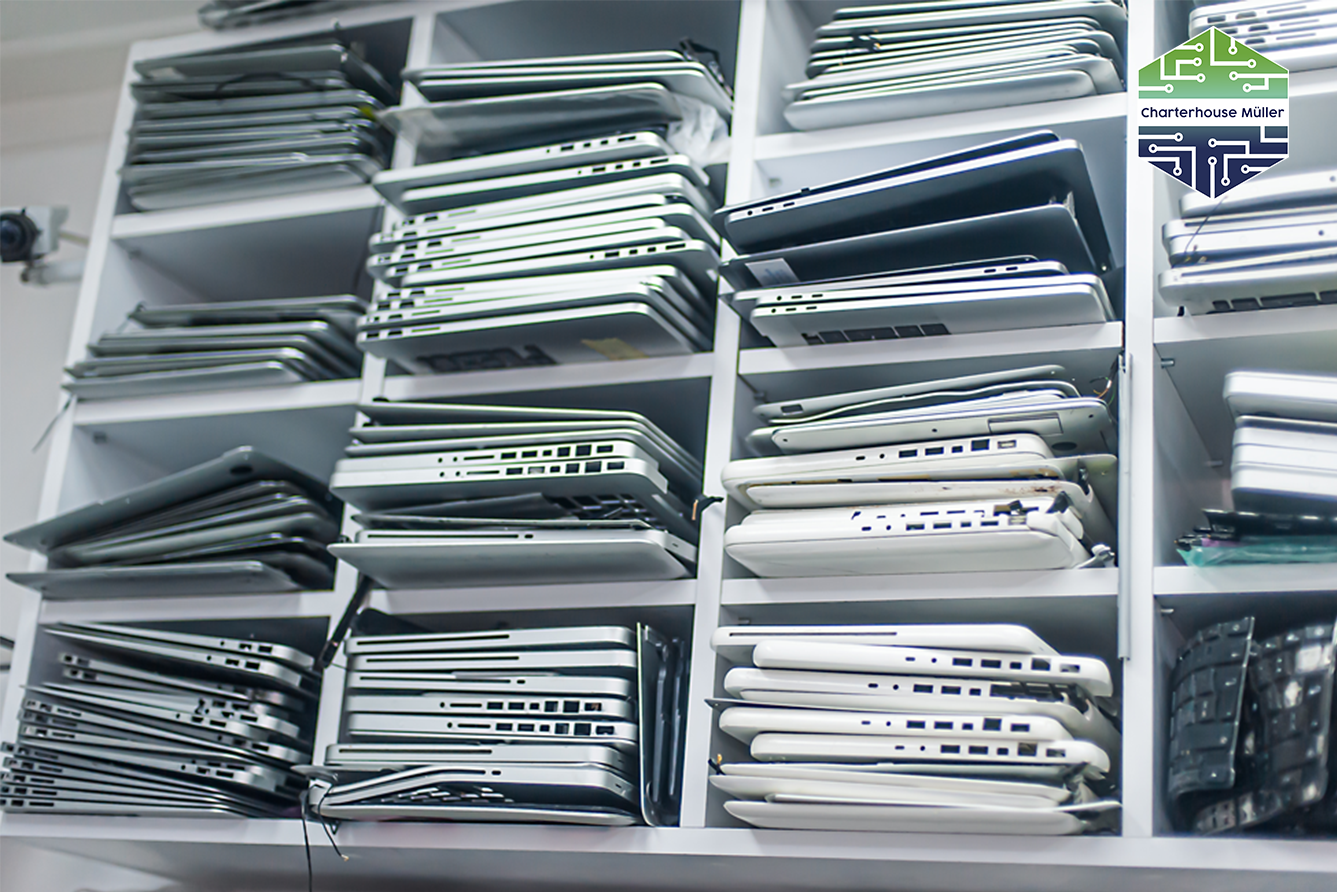
13 May Understanding ITAD: The Crucial Process in Managing Technology Assets
In a way to stay competitive and a great place to work, some businesses and institutions are constantly upgrading their technology. However, with this shorter refresh cycle comes the inevitable challenge of managing obsolete or surplus IT equipment. This is where ITAD or IT Asset Disposition, plays a crucial role. ITAD is the systematic approach to managing the end-of-life cycle of IT assets, encompassing everything from decommissioning and data destruction to responsible recycling, resale, refurbishment or donation.
This blog explores what ITAD entails and why it’s essential.
What does ITAD entail?
ITAD involves a series of processes aimed at maximising the value recovery of retired IT assets while minimising potential risks associated with data security and environmental impact. These processes typically include:
- Inventory and assessment: The first step in ITAD involves identifying all IT assets within an organisation (or school), assessing their current condition and determining their end-of-life status.
- Data sanitisation and destruction: Protecting sensitive data is paramount during IT asset disposition. Proper data sanitisation methods, such as secure data wiping or physical destruction of storage devices, ensure that no confidential information remains on retired equipment.
- Re-marketing and resale: Assets that still retain value can be refurbished and resold in secondary markets, providing organisations with a potential revenue stream and reducing the environmental footprint associated with electronic waste.
- Recycling and responsible disposal: For assets that are no longer usable or marketable, responsible recycling is essential to minimise environmental impact. ITAD providers often partner with certified recyclers to ensure compliance with environmental regulations and ethical disposal practices.
- Documentation and reporting: Comprehensive documentation throughout the ITAD process is essential for regulatory compliance, audit purposes and maintaining transparency regarding the fate of retired IT assets. For example, we provide documentation to certify data has been erased securely as well as a report that shows the amount of CO2 saved by recycling your assets.
Why is ITAD important?
- Data security: In an era of increasing data breaches and privacy concerns, ensuring the secure disposal of sensitive information is critical for protecting both businesses and their customers from potential cyber threats.
- Compliance and risk mitigation: Many industries are subject to stringent regulations governing the handling and disposal of electronic data and equipment. Non-compliance can result in severe penalties and reputational damage. ITAD helps organisations navigate these regulatory requirements and mitigate associated risks.
- Environmental sustainability: The improper disposal of electronic waste poses significant environmental hazards, including pollution and resource depletion. By adopting responsible ITAD practices, businesses can contribute to sustainability efforts by reducing e-waste and promoting recycling.
- Cost Efficiency: Proper management of IT assets throughout their lifecycle can result in cost savings for organisations. By maximising the residual value of retired equipment through remarketing or resale, businesses can offset the costs associated with technology upgrades.
- Reputation and Corporate Social Responsibility (CSR): Demonstrating a commitment to ethical and sustainable business practices is increasingly important for maintaining a positive reputation and meeting the expectations of stakeholders. Implementing responsible ITAD policies aligns with broader CSR initiatives and enhances brand credibility.
In conclusion, ITAD is far more than just disposing of outdated technology—it’s a strategic process that encompasses data security, regulatory compliance, environmental stewardship and financial optimisation. By partnering with reputable ITAD provider such as CHM, you can effectively manage technology assets throughout its lifecycle while minimising risks and maximising returns. Embracing ITAD is not only a sound business decision but also a testament to an organisation’s commitment to sustainability and responsible corporate citizenship in the digital age.
For more information on how we can help you achieve a successful ITAD strategy, please get in touch by completing a form below.

